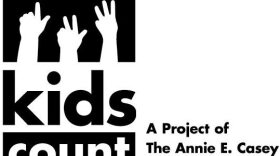In 2012, 224,000 Colorado children lived in poverty. That’s one out of every six in the state, according to the annual Kids Count report.
Colorado also has the eighth fastest growing child population in the country.
The report is part of the national Kids Count project of the Annie E. Casey Foundation. For the third year, the report includes a Child Well-being Index that compares how children are faring in Colorado’s largest 25 counties by using 12 indicators to assess children’s health, education and family and community support.

Colorado children under the age of 6 are most likely to be in poverty, with 1 in 5 living in poverty in 2012. The number of Colorado children living in areas of concentrated poverty, where the poverty rate is higher than 30 percent, has more than quadrupled since 2000. The report also found that the growth in the number of children in Colorado has not been evenly distributed across the state.
“Much of the increase in the child population has occurred in a handful of urban counties. Most rural counties have seen a decline in child population, although several rural-resort counties like Summit, Eagle and Pitkin counties saw the number of children increase. Since 2000, Douglas County experienced the largest percentage growth in its child population, while sparsely populated Mineral County saw the largest percentage decline.”
The growth has been primarily been in the Hispanic population, which now makes up one-third of Colorado children.
“Children of color tend to do worse on almost all indicators of child well-being than non-Hispanic white children,” said Sarah Hughes, the Research Director for the Colorado Children’s Campaign. “And there will come a day, population projections show that that could be as few as 10 years when children of color make up the majority of Colorado’s child population.”
Over time, she says that will translate to a majority of the workforce who grew up in poverty, didn’t graduate high school on time and didn’t have the same advantages as affluent children, which won’t bode well for the state as a whole.

The report also found that Colorado is the fifth least affordable state in the nation for child care, saying, “Colorado consistently ranks as one of the least-affordable states, relative to median income, for both center-based child care and family child care homes. In 2012, the average annual cost of infant care in a Colorado child care center was $12,736 — the fifth least affordable in the nation and more than the cost of tuition at a four-year public college or university.”
The full Kids Count In Colorado! report is available at the Colorado Children's Campaign website.






